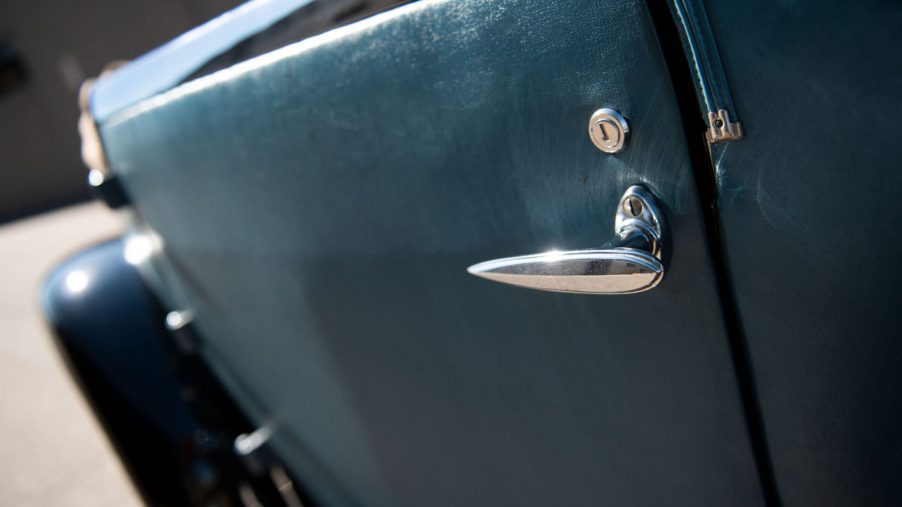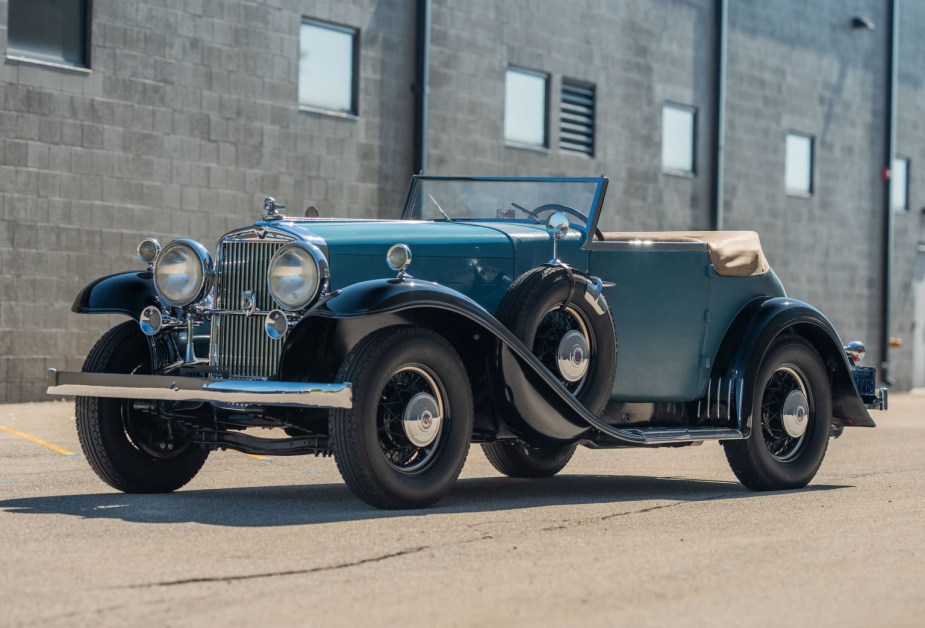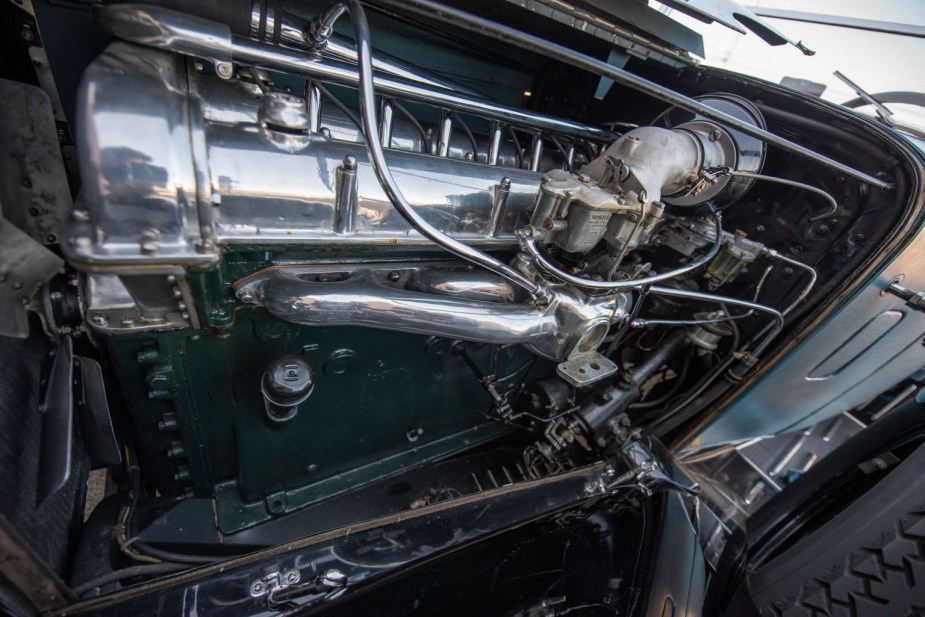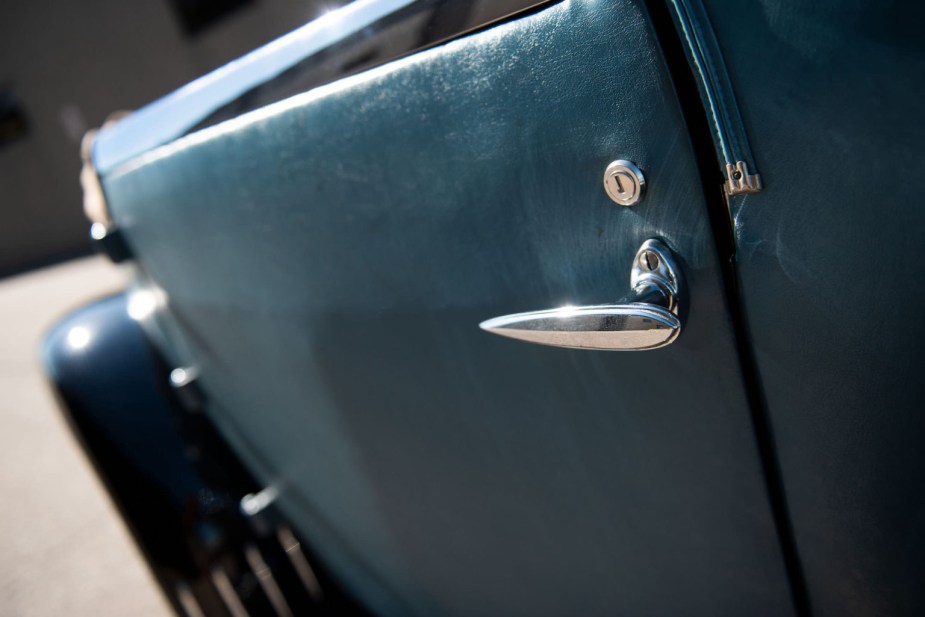
This Ultra-Rare Supercar Body Is Made of Fabric
Supercar is a relative term. However, a few aspects are shared by supercars from any time in history; power, rarity, and flashiness. Between 1931 and 1933, it is believed that only approximately 20 of the Stutz DV-32 Super Bearcats were ever made. These cars were crazy rare, even back then. The DV-32 Super Bearcat motor powered the car that almost won LeMans in 1932. Most importantly, the DV-32 Super Bearcat had bodywork made of fabric. Is that flashy enough for you?

Before the Super Bearcat, there was the mighty Stutz Bear Cat
According to Silodrome, the original Bear Cat debuted in 1911 when it placed 11th in the Indianapolis racing program. Considering the car was built in only five weeks, this made some heads turn. It was an Indy 500 ad featuring the Bear Cat that officially marked its public debut. Fun fact: this race is now recognized as the first Indianapolis 500, and the Bear Cat got 11th out of 40 racers.
Silodrome notes that the Bear Cat (eventually changing its name to “Bearcat”) was sold until 1923, with many iterations over the 13-year run. Harry Stutz was ready to move on to other models.
In ‘31, Stutz decided to resurrect the brand’s most famous name to combat the difficulties of selling cars at the beginning of the Great Depression. This new and improved Bearcat would need all the newest tech, so Stutz used the company’s DV-32, a dual-valve inline-eight cylinder with double overhead cams and four valves per cylinder. Only the fastest versions of the old racecar got the Super Bearcat delineation.
How fast was the Stutz DV-32 Super Bearcat?

These Super Bearcats got a much shorter (and therefore lighter) 116-inch chassis and a low-slung body for a lower center of gravity. Ol’ Stutz was really going for something here. Its new-found lightweight chassis paired with the 156-hp and 300 ft-lbs of torque DV-32 engine meant the Super Bearcats could crest 100 mph, which at the time was wild.
Given the economic stresses of the day, it is believed that only 20 examples of the Super Bearcat were ever made. Of those 20, most were aluminum-bodied racers. Some very rare few were the “Weymann Fabric Bodies.” Not only did these fabric bodies weigh less, but they were also quieter than the clanking, squeaking metal bodies.
Were all Stutz DV-32 Super Bearcats made with fabric bodies?

Of those 20, most were aluminum-bodied racers. Some very rare few were the “Weymann Fabric Bodies.” Not only did these fabric bodies weigh less, but they were also quieter than the clanking, squeaking metal bodies.
Only a very select few Bearcats were made using this technique. Of the eight surviving Super Bearcats, only two fabric-bodied examples are known to exist.
This may seem wild by today’s standards, excluding BMW, of course, but in the 1930s, this was a common way to build aircraft. This not only kept them lightweight but in between WWI and WWII was the Great Depression, so saving metal also wasn’t the worst idea.
The Weymann-bodied examples featured a wooden frame with fabric stretched tightly over to form a body. Despite this cool and clever body style, Stutz wouldn’t make it to see the 1940s. The brand filed for bankruptcy in 1939, ending the line.
Now, after 83 years, rumors are swirling about reviving Stutz as an EV brand. While I doubt the fabric bodies are returning, don’t be surprised if the Bearcat name returns to our roads one of these days.



